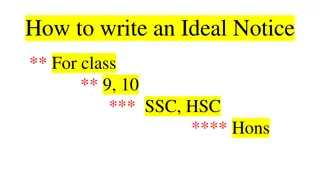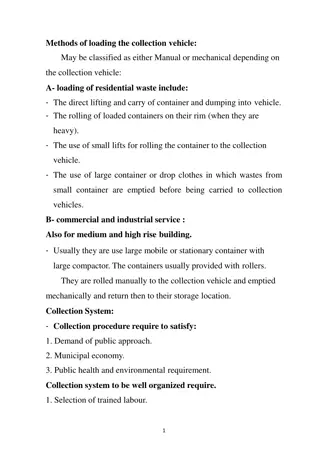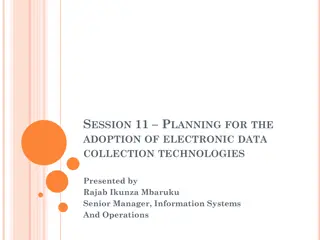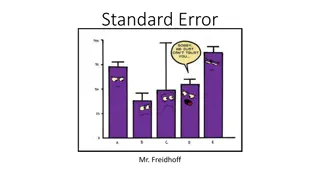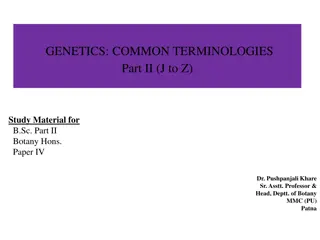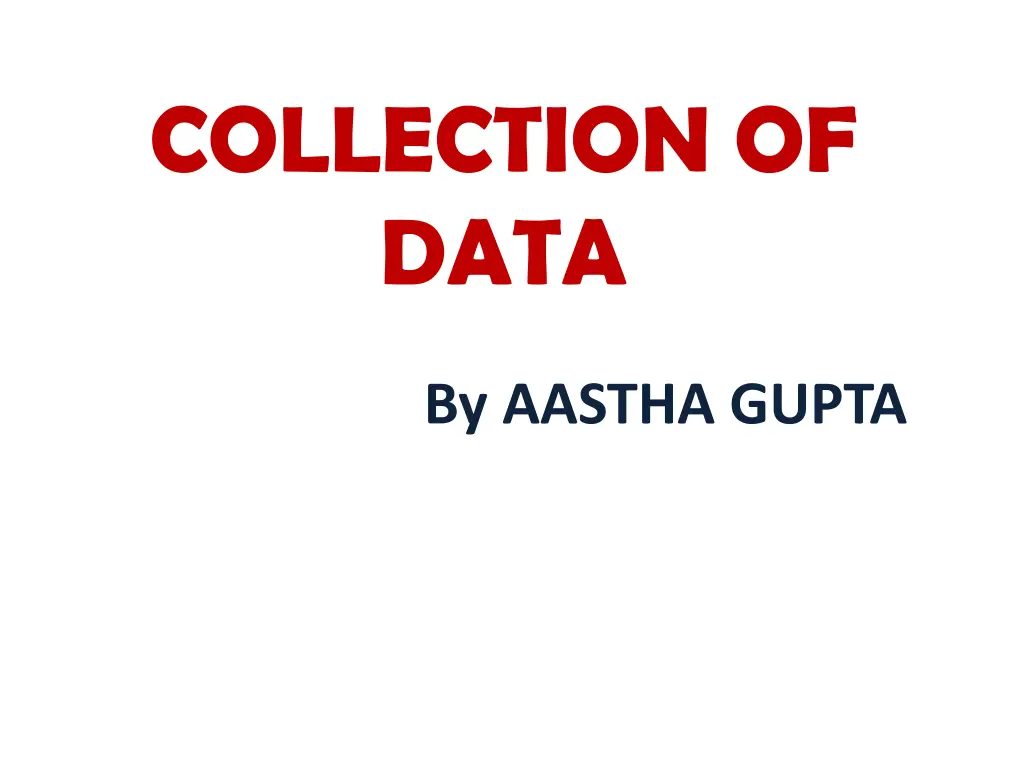
Understanding Data Collection Methods and Types of Data
Explore the fundamentals of data collection, including what data is, how it is collected, primary and secondary data types, and methods for collecting primary data such as direct personal investigation and indirect oral investigation. Gain insights into the importance of accurate data collection practices for statistical analysis.
Download Presentation

Please find below an Image/Link to download the presentation.
The content on the website is provided AS IS for your information and personal use only. It may not be sold, licensed, or shared on other websites without obtaining consent from the author. If you encounter any issues during the download, it is possible that the publisher has removed the file from their server.
You are allowed to download the files provided on this website for personal or commercial use, subject to the condition that they are used lawfully. All files are the property of their respective owners.
The content on the website is provided AS IS for your information and personal use only. It may not be sold, licensed, or shared on other websites without obtaining consent from the author.
E N D
Presentation Transcript
COLLECTION OF DATA By AASTHA GUPTA
DATA & DATA COLLECTION What is data? Basically, data is the information in raw or unorganised form(such as alphabets, numbers, symbols etc.) which represent conditions, ideas or object. Mostly, data is in quantitative form. What is data collection? In aspect of statistic investigation, data collection is most important. Data collection refers to the process collecting data from various source and methods. Data collection should be under very care and caution cause it constitutes the sound structure of statistic investigation and analysis .
TYPES OF DATA PRIMARY DATA SECONDARY DATA
PRIMARY& SECONDARY DATA PRIMARY DATA Primary data refers to the data which is originally collected for the first time, from beginning to end, for a specific purpose by an investigator. Acc. To Wassel , Data originally collected in the process of investigation are known as primary data. SECONDARY DATA Secondary data refers to the data which are not collected originally, but are obtained from published and unpublished source. Acc. To Wassel , data collected by other person are called secondary data.
PRIMARY DATA SECONDARY DATA BASIS originality original data Existing data Nature Raw material in shape. Work in progress or finished form. Cost component Requires more funds in collection. Comparitively less funds req. Time factor Time consuming collection. Less time is taken. Personal prejudice& bias. Possibility of such cases are probable in primary data. Primary data can be secondary data. No bias and prejudice. Relationship But secondary can t be primary data.
METHODS OF COLLECTING PRIMARY DATA There are five methods of collecting primary data:- Direct Personal Investigation Indirect Oral Investigation Information Through Local Correspondents Mailed Questionnaire Method Schedules to be Filled By Enumerators
DIRECT PERSONAL INVESTIGATION Under this method, data are collected personally by the investigator. The interviewer ask relating to the survey face to face and collects desire information. MERITS Reliable and uniform Questions can be adjust acc. to the educational level Original information DEMERITS Unsuitable in wider area High prejudice and personal bias Costly & Time consuming
INDIRECT ORAL INVESIGATION Under this method, investigator collects the data by interviewing the party informants known as witnessed. Such method is usually adopt enquiry committees and commission appointed by govt.. MERITS Wide area can be covered Less time, cost and manpower is required Free from personal bias and prejudice DEMERITS Less accurate and reliability Improper choice of witness mislead results Honesty can be influenced by bribe or undue pressure
INFORMATION from LOCAL SOURCE CORRESPONDENTS . Under this method, investigator appoints local agents or correspondents in different regions to collect information. Such is suitable in newspaper agencies and govt. dept From wider area. MERITS Economical method Wider area is covered Quality of data is collected DEMERITS Lack of uniformity Inaccurate Personal prejudice and bias
MAILED QUESTIONNAIRE Under this method, a list of questions is prepared related to survey(contains regarding objective ques.) and is sent with covering letter selected ones with a polite request to fill it. MERITS Cover wider area with no bias Economical method Original and accurate DEMERITS Not applicable to illiterate person Informants not take interest in it Information can be vague or incomplete
SCHEDULE FILLED THROUGH ENUMERATORS Under this method, a team of enumerators is selected with questionnaires . They are contact with informants and filled ques. with own handwriting. This overcomes many limitations of mailed questionnaire method. MERITS Accurate and reliable Applied in situations of illiterate Positive response from informants DEMERITS Time consuming and bias method Depends upon skills and efficiency of enumerators Lack of uniformity
METHODS OF COLLECTING SECONDARY METHODS The sources are classified as:- PUBLISHED SOURCES UNPUBLISHED SOURCES
PUBLISHED SOURCES Various sources are:- International publications Official publications of govt. authorities Semi govt. Publications Publications by trade and professional bodies Financial and economical journal Newspapers
UNPUBLISHED SOURCE Various source are:- Records maintain by private org. for office use Confidential records maintained by various govt. Departments Studies retained by research institutions and scholars
SUMMARY METHODS OF DATA COLLECTION PRIMARY DATA SECONDARY DATA PUBLISHED UNPUBLISHED
THANK YOU








